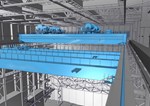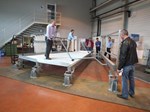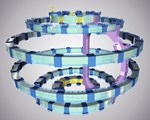Shortly after World War I, Daniel Dunlop, a visionary working in the British electricity industry, decided to bring together leading energy experts for a World Power Conference to discuss the energy issues of the day.
Held in London in 1924, the First World Power Conference attracted 1,700 delegates from 40 countries. The meeting was so successful that those attending decided to establish a permanent organization to pursue the dialogue on a regular basis.
From those auspicious beginnings can be traced the origin of the 22nd World Energy Congress (WEC), which gathered more than 6,000 delegates last week in Daegu, South Korea.
In a little under 90 years the "energy issues of the day" have changed drastically. During the early years, the World Power Conference (the name was changed to World Energy Congress in 1968) was all about assessing the "power resources" of the world and presenting the "inventions" that would help to exploit them.
In the last quarter of the twentieth century as the WEC focused on the fluctuations of the oil market, new players entered the field (nuclear), new preoccupations surfaced (the environment) and energy—due to economic, political and technological concerns—became a societal issue.
The 22nd edition of WEC aimed to focus attention on another drastic change in the global politics of energy. What is at stake today is the very future of our planet. "Energy security is one of the biggest issues that humankind faces," insisted Korean Prime Minister Jung Hong-won in his opening address. "Depletion of natural resources, environmental pollution, and climate change pose an actual threat to people's lives."
As WEC delegates debated the options for "Securing Tomorrow's Energy Today," fusion was, for the first time, included in the official agenda. In a dedicated session on fusion, experts—ITER Director-General Osamu Motojima and former MAC chair Gyung-Su Lee among them—argued that fusion could significantly contribute to the energy mix of the future.
"After ITER success around 2030, we can start the DEMO national projects. DEMO could produce energy by 2040 and feed fusion power to the grid," said Osamu Motojima.
As the curtain fell on the 22nd edition of WEC on Thursday 17 October, the "true engagement" called for by WEC Chairman Pierre Gadonneix to bring about "a sustainable energy future for people throughout the world" was virtually signed.
Below are excerpts from keynote speeches and interviews from the 22nd edition of WEC.
On general energy issues
Ban Ki-moon, UN Secretary General:
"Energy is the golden thread that connects economic growth, environmental health, social fairness and opportunity."
Park Geun-hye, President of the Republic of Korea:
"We are now faced with the biggest challenge ever in relation to energy on a global scale [...] but if we gather our wills together, there must be a way and a solution."
Jung Hong-Won, Prime Minister of the Republic of Korea:
"Energy security is one of the biggest issues that humankind faces, with a depletion of natural resources, environmental pollution, and climate change posing a threat to people's lives."
Maria van der Hoeven, Director of the International Energy Agency (IEA):
"Right now, a population four times the size of the US lives without access to electricity, holding back global economic development. Tackling this problem is a moral imperative, and we cannot afford to ignore it."
Khalid A. Al-Falih, President and CEO of Saudi Aramco:
"The inevitable, massive [global] growth in demand for electricity means nuclear will still form a significant part of the electricity generation mix."
Dan Roderick, President and CEO, Westinghouse:
"If you want energy security you can't do it better than with nuclear."
Yukiya Amano, Head of the International Atomic Energy Agency
"There will be an increase of nuclear power globally, but Asia will be at the centre of that, especially China, India and South Korea. Seventy new nuclear power reactors are being built at the moment—50 of them in Asia—in addition to the more than 430 already in operation worldwide."
On Fusion
Osamu Motojima, Director-General, ITER Organization:
"After ITER success around 2030, we can start the DEMO national projects. DEMO could produce energy by 2040 and feed power to the grid."
G.S. Lee, former President of the National Fusion Research Institute of Korea, former ITER MAC Chair:
"What makes fusion completely different is that it's a knowledge-based energy, not a resource-based energy."
Minh Quang Tran, Director-General of the Centre for Plasma Physics at Ecole Polytechnique, Lausanne, Switzerland:
"We have the talent and the resources. What we need now is the political commitment, but in parallel, not sequentially [...] We have arrived at the moment that Lev Artsimovitch had anticipated when he said, back in the 1970s, that fusion would be available when society needs it. Well, society needs fusion now."
Nebojsa Nakicenovic, professor of energy economics at the Vienna University of Technology:
"Fusion is both disruptive and inspirational—after all, it's about taming the stars... I'm convinced that fusion will change the whole energy paradigm by the middle of the 21st century."






